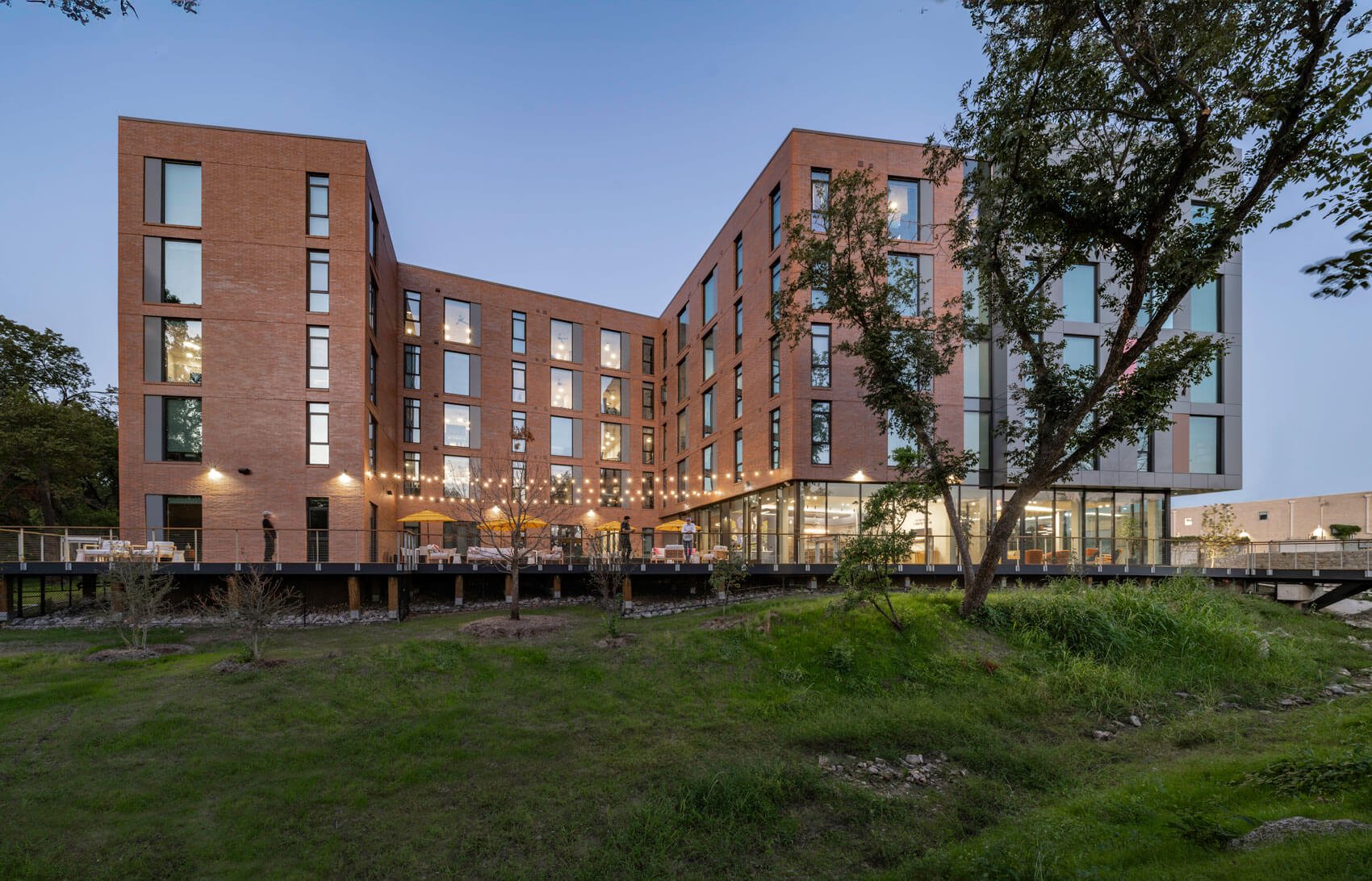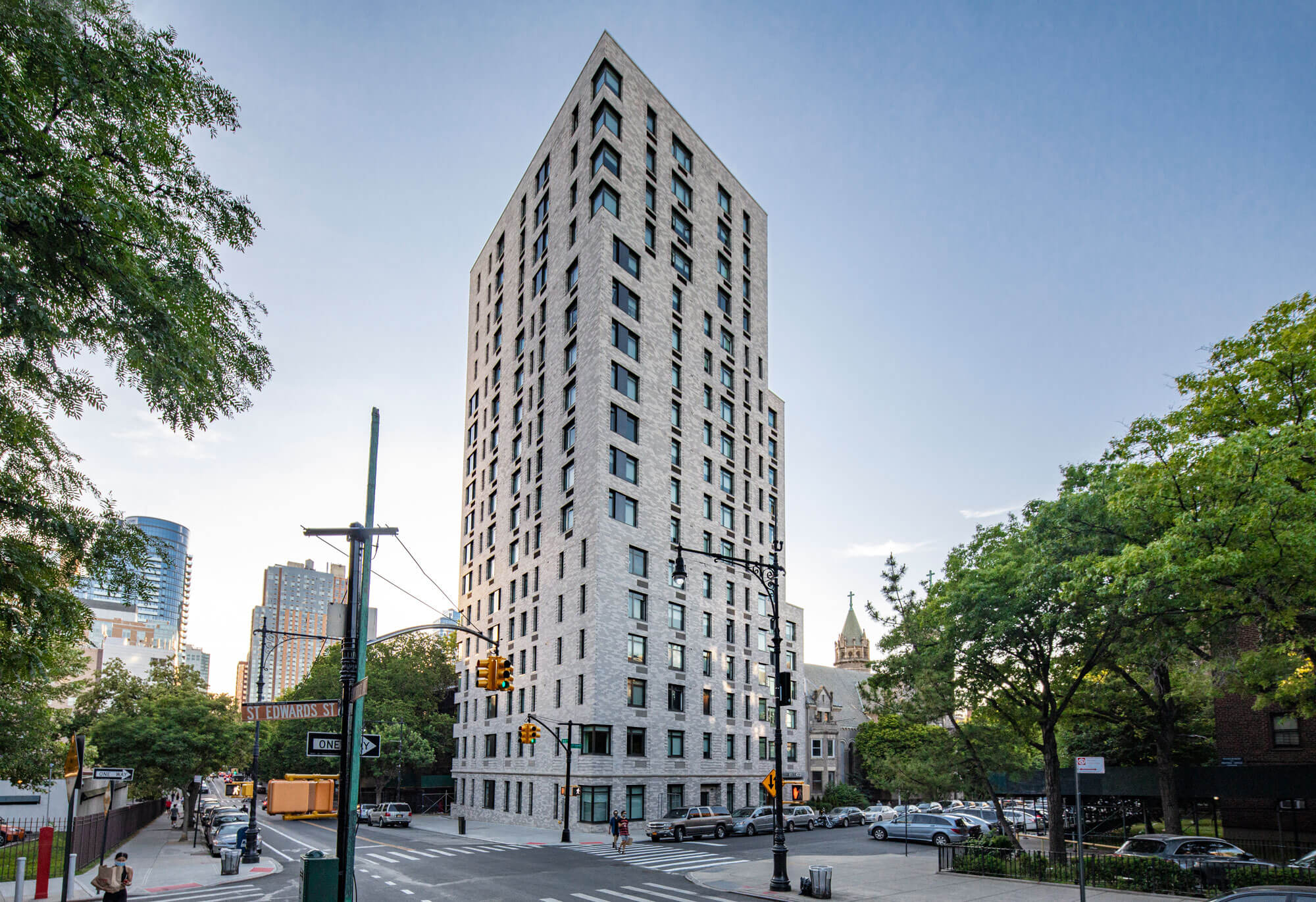Architects have long been at the vanguard in the fight for LGBTQIA+ equal rights. Kiyoshi Kuromiya, a student of Buckminster Fuller, cofounded ACT UP, and later served as a delegate to the Black Panther Party in Philadelphia. Kuromiya likewise started the Critical Path AIDS Project, which connected people living with HIV/AIDS to medical treatment.
Pride Month is a time to reflect upon how far we’ve come since the 1969 Stonewall Riots, in which Kuromiya played a key role. This window in time between then and now can be aptly characterized as an arc of extremes: Today, Scott Bessent is the first openly gay U.S. Treasury Secretary, fifth in line to President Trump, with a net worth of $521 million. At the same time, over 40 percent of LGBTQIA+ seniors live below the federal poverty line, a number expected to spike by 2050.
In Utah, the GOP wants to bar transgender, nonbinary, and gender-nonconforming students from college dormitories. U.S. Housing & Urban Development (HUD) secretary Scott Turner has repealed the 2016 Equal Access Rule, which shielded transgender people from discrimination at homeless shelters. LGBTQIA+ applicants see bias in the rental application process, and get turned down for apartments at much higher rates than their non-LGBTQIA+ peers.
What is to be done?
New supportive housing like Oak Lawn Place in Texas by Perkins&Will, in New York at Stonewall House by Marvel Architects, and elsewhere is getting built for LGBTQIA+ individuals. SHEEEP, founded by Reza Nik, is collaborating with People With AIDS (PWA) Toronto to deliver a new community hub further afield in Ontario. The PWA center will have a community kitchen, market, hair salon, therapeutic treatment, an event space, art gallery, and studios. These are all vital resources, but the wait lists at places like Stonewall House are long because there are simply so few of them—it can take 3–6 years to find lodging there, for instance.
How can LGBTQIA+ supportive housing be incentivized and expedited in light of the political moment, where the federal government is cracking down on civil liberties, and divesting from DEI campaigns? The Milken Institute, an independent think tank, and Services & Advocacy for GLBT Elders (SAGE), Stonewall House’s operator, recently published a report to help finance supportive housing construction for LGBTQIA+ individuals over the age of 65.
Models for Financing Affordable and LGBTQ+-Affirming Elder Housing at Scale was penned by the Milken Institute’s Ivy Hsu, Caitlin MacLean, and Kanika Singh, with SAGE’s support. The report tells you how to finance supportive housing using social bonds, design an impact investment fund, implement a pay-for-performance model, incentivize good housing management, and establish financial sector partnerships, all with the shared goal of delivering supportive housing for LGBTQIA+ seniors.
Shifting Terrains
It’s common today for governments, housing authorities, and corporations to issue bonds for housing, like how Co-op City in the Bronx got built. State-issued social bonds are especially useful today, however, for housing and healthcare advocates, given uncertainty in federal funding, and Medicaid cuts. What makes the strategy by Milkens Institute and SAGE unique is the idea to use social bonds for financing supportive housing and services specifically for LGBTQIA+ seniors.
“Traditional private equity funds have been geared toward getting the highest return possible but, in the past 20 or 30 years, we’ve seen more funds invest in housing developments and companies that provide services with demonstrable social impact,” Caitlin MacLean told AN. “We’ve seen investors say, ‘I would normally expect a 20 percent return, but in this case, I’ll take a 5 to 10 percent return’ if the investment is right. There’s more flexibility. They want to have some type of positive environmental or social impact, whether it be a small family office, a large pension fund, and everything in between.”

This shift in shareholder priorities is a ripe context for innovation, especially in the housing sector, MacLean added. What are the bottlenecks?
MacLean recognizes regional nuances in politics, land use, zoning, staffing, and other factors. These problems are exacerbated in rural areas, she added. The Milken Institute’s report recommends first employing the model in LGBTQIA+ friendly states. From there, after a project has been financed, built, occupied, and the shareholders are happy, it’s easier to go back to banks, earn confidence, and issue social bonds elsewhere with verifiable proof of concept.
But there’s also opportunity in more conservative districts. The report’s emphasis on pay-for-performance models is appealing to anyone in government that wants to curb spending, and balance a budget. For MacLean, the way to pitch social bonds to governments is by emphasizing social return.
“It costs more to have a social worker and care coordinator on site, nor are developers legally mandated to pay for them, but property owners find that tenants are more likely to pay their rent on time, better maintain the building, and bolster overall resiliency,” she said.
“I think the uncertainty and legislation we’re starting to see is sadly going to drive innovation. Necessity is hopefully going to have a silver lining,” MacLean said. “Thankfully we’re seeing more and more investment firms, real estate developers, high net worth individuals, foundations, and impact investors step up for the federal and state levels. This is partially because it’s the right thing to do, but also because it’s just good business.”
Filling in the Gaps
Today, Stonewall House, and other LGBTQIA+ supportive housing developments are essential for combatting bias in the healthcare and housing sectors. Moreover, LGBTQIA+ seniors face higher rates of social isolation, among other factors that create poor quality of life, due to prejudice. Elise Parrish, a University of Pennsylvania sociology Ph.D. student and Population Studies Center fellow, researches these issues.
“LGBT seniors are concerned about bias from long term services and support (LTSS) providers, and discrimination in nursing home settings,” Parrish told AN. “Some providers have a lack of training and knowledge about LGBT health issues. Seniors have reported generally negative attitudes among providers toward same sex relationships between older adults.”

Parrish also notes that older LGBTQIA+ adults are less likely to be partnered, and four times less likely to have children that take care of them. This means bathing, eating, living, and driving to appointments alone, leading to negative health consequences. Places like Stonewall House help fill in these gaps in the system.
“Stonewall, New York City’s first LGBTQ+ elder public housing project, has created a welcoming and safe place where seniors can live with dignity and acceptance,” Marvel told AN.
“SAGE, which operates the ground floor senior center, and provides services to the residents, also organizes events within the building’s lounge space to build community for all the residence,” the architects elaborated. “Marvel is privileged to have played a role in this incredible project.”
→ Continue reading at The Architect's Newspaper
